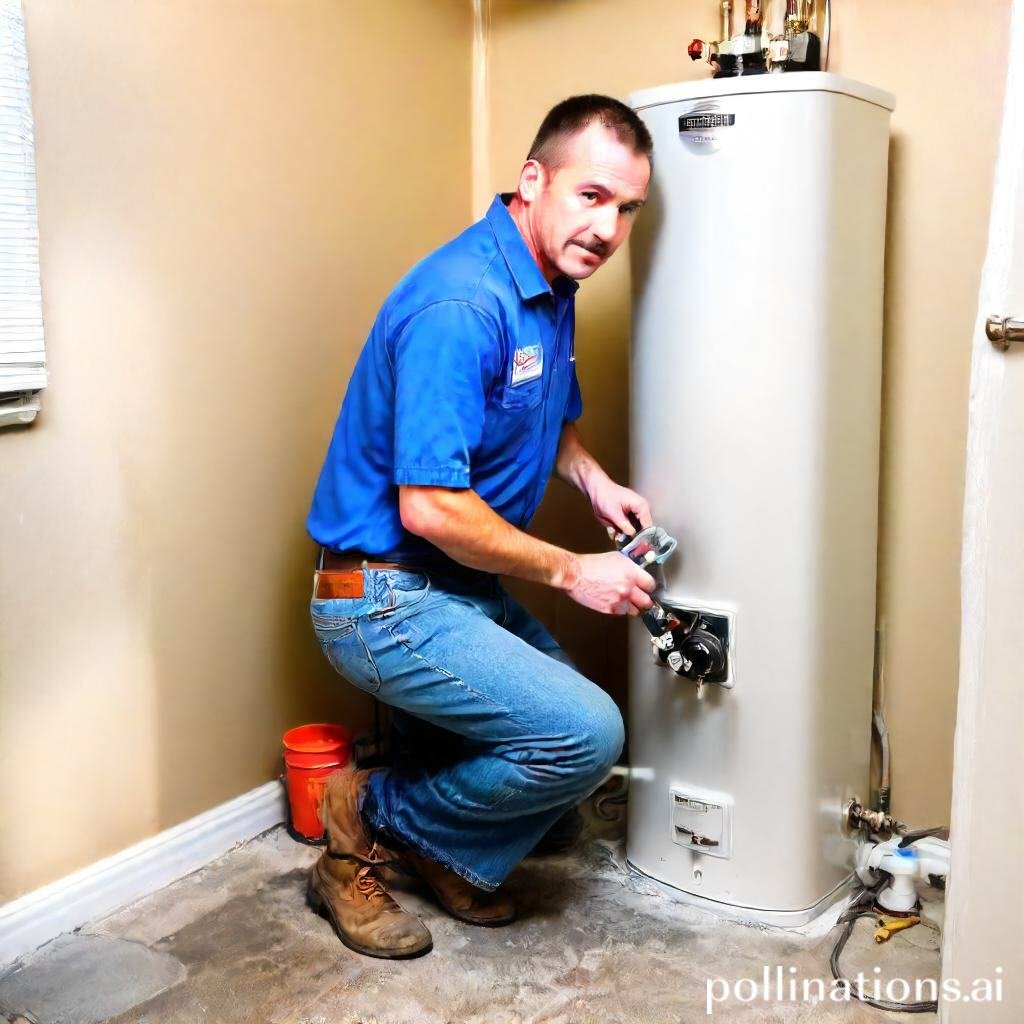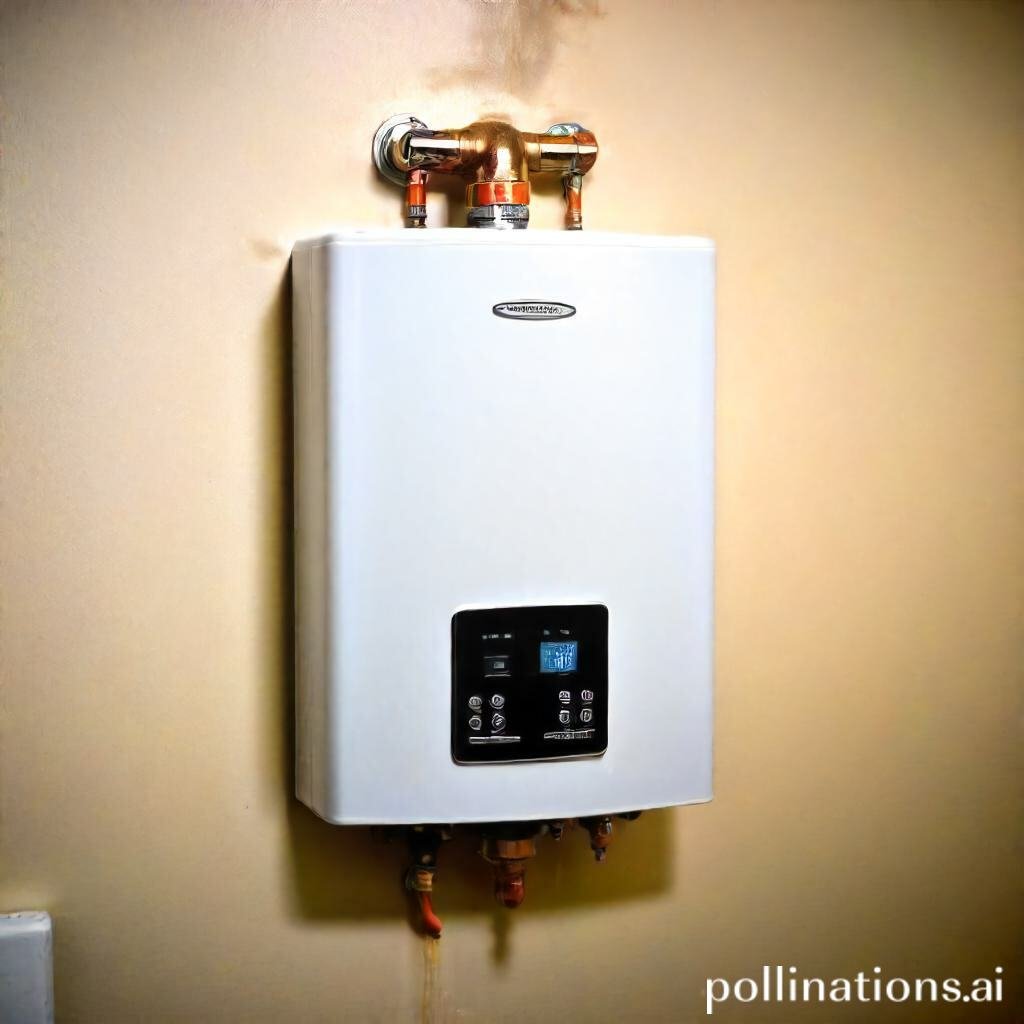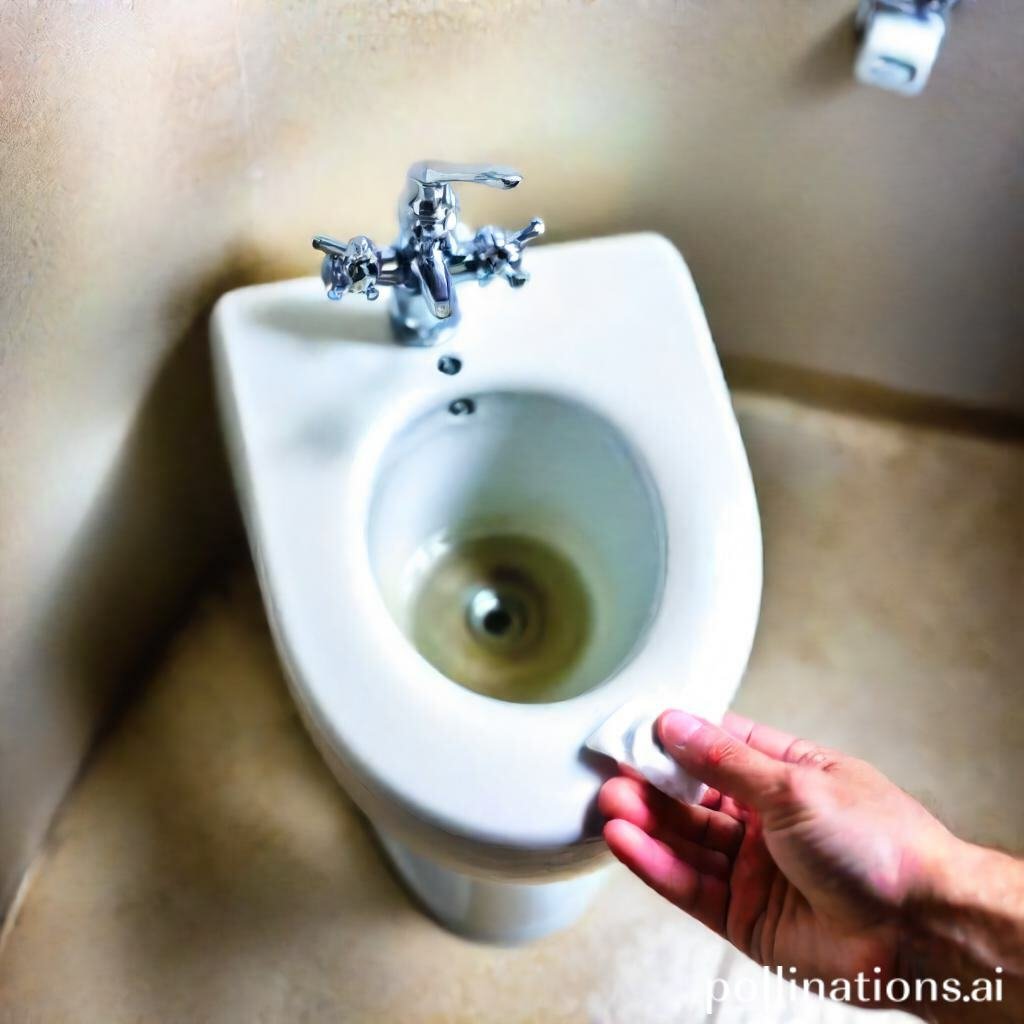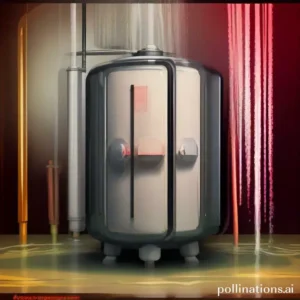
II. Scaling occurs when minerals in the water accumulate and form a layer of sediment on the heating element, which can lead to decreased efficiency and even damage to the unit.
III. Flushing the tankless water heater involves using a descaling solution or vinegar to dissolve the sediment and then flushing it out with water, and should be done annually or biannually depending on the hardness of the water in your area.
Flushing is an essential process for preventing scaling in tankless water heaters. Scaling occurs when minerals and sediments build up in the heating element, reducing efficiency and potentially causing damage.
Flushing involves removing these deposits through a thorough cleaning process, ensuring optimal performance and longevity of the heater. By regularly flushing your tankless water heater, you can maintain its efficiency, save energy, and extend its lifespan.
So, don’t neglect this important maintenance task and keep your tankless water heater running smoothly for years to come.
Signs of Scaling in Tankless Water Heaters
1. Decreased water flow
One of the common signs of scaling in tankless water heaters is a decrease in water flow. Scaling occurs when minerals and sediments build up inside the heating elements of the heater. This build-up restricts the flow of water, resulting in reduced water pressure and slower hot water delivery.
For example, if you notice that the water pressure in your showers or faucets has decreased significantly, it could be an indication of scaling in your tankless water heater.
2. Reduced hot water supply
Another sign of scaling in tankless water heaters is a reduced hot water supply. Scaling can create a barrier between the heating elements and the water, making it harder for the heater to heat water efficiently.
Imagine taking a hot shower and suddenly experiencing a decrease in water temperature. This could be a result of scaling in your tankless water heater, as the scaling hinders the heater’s ability to provide a consistent supply of hot water.
3. Strange noises
Scaling can also cause strange noises to come from your tankless water heater. As the minerals and sediments build up, they can create a layer of insulation that causes the heating elements to overheat.
If you start hearing banging, popping, or other unusual sounds coming from your tankless water heater, it’s likely that scaling is the culprit. These noises indicate that the heater is struggling to heat the water efficiently and may need attention to prevent further damage.
4. Increased energy bills
Scaling in tankless water heaters can have a direct impact on your energy bills. When the heating elements are covered in scale, they require more energy to heat the water to the desired temperature.
As a result, your tankless water heater may consume more electricity or gas, leading to higher energy bills. If you notice a sudden increase in your energy costs without any other explanation, it’s worth checking for scaling in your water heater.
5. Error codes on the unit
Many tankless water heaters come equipped with error code indicators. These codes display on the unit’s control panel and can help identify various issues, including scaling.
If you see error codes related to water flow, temperature, or heating, it could be a sign of scaling in your tankless water heater. These error codes serve as a warning system to alert you to potential problems and should be addressed promptly to prevent further damage.
| Signs of Scaling | Description |
|---|---|
| 1. Decreased water flow | Mineral and sediment build-up restricts water flow, leading to lower water pressure. |
| 2. Reduced hot water supply | Scaling hinders the heater’s ability to provide a consistent supply of hot water. |
| 3. Strange noises | Scaling causes overheating and results in banging, popping, or other unusual sounds. |
| 4. Increased energy bills | Scaling requires more energy to heat the water, leading to higher energy costs. |
| 5. Error codes on the unit | Error codes indicate potential issues, including scaling, that require attention. |
How to Flush a Tankless Water Heater
Flushing a tankless water heater is a crucial maintenance task that helps to ensure its optimal performance and longevity. By heeding these steps, you can effectively flush your tankless water heater and keep it running smoothly:
1. Turn off the power supply
Before starting the flushing process, vital to turn off the power supply to the tankless water heater. This will prevent any potential electrical hazards and ensure your safety.
2. Turn off the water supply
Next, locate the water shut-off valve that connects to the tankless water heater and turn it off. This will stop the flow of water into the unit and allow you to proceed with the flushing process.
3. Drain the unit
Open the drain valve on the tankless water heater and let the water inside it drain out completely. This step is essential to remove any sediment or debris that may have accumulated inside the unit.
4. Apply a descaling solution
To effectively clean the tankless water heater, you can use a descaling solution specifically designed for this purpose. Follow the manufacturer’s instructions to apply the solution and ensure thorough cleaning.
5. Flush the unit
Once the descaling solution has been applied, it’s time to flush the unit. Connect a hose to the cold-water inlet valve and place the other end in a suitable drainage area. Open the valve and let water flow through the unit for a few minutes to flush out any remaining residue.
6. Rinse the unit
After flushing, close the cold-water inlet valve and remove the hose. Open the hot water taps in your home and let the water run for a few minutes. This will help to rinse out any lingering solution or debris from the tankless water heater.
7. Refill the unit
Once the rinsing process is complete, close the hot water taps and turn on the water supply to the tankless water heater. Allow the unit to fill up with water before proceeding to the next step.
8. Turn on the power supply
Finally, it’s time to turn on the power supply to the tankless water heater. Ensure that all connections are secure and then switch on the power. The unit should now be ready to provide you with hot water efficiently.
Frequency of Flushing Tankless Water Heaters
As for maintaining the optimal performance of your tankless water heater, regular flushing is essential. Flushing helps to remove any mineral buildup or sediment that may accumulate over time, ensuring that your heater functions efficiently and provides hot water whenever you need it. In this section, we will discuss the frequency at which tankless water heaters should be flushed, taking into consideration manufacturer’s recommendations, water hardness levels, and household usage.
1. Manufacturer’s Recommendations
Each tankless water heater manufacturer may have specific guidelines regarding flushing frequency. It is crucial to refer to the user manual or contact the manufacturer directly to determine their recommended flushing schedule. Following these guidelines will help prolong the lifespan of your heater and prevent any potential issues caused by neglecting regular maintenance.
2. Water Hardness Levels
The hardness of your water can impact the rate at which mineral deposits accumulate in your tankless water heater. Hard water, which contains high levels of minerals such as calcium and magnesium, tends to leave more residue over time. If you live in an area with hard water, it is advisable to flush your tankless water heater more frequently to prevent significant buildup. Testing the hardness of your water can be done using water testing kits readily available in the market.
3. Household Usage
The frequency of flushing your tankless water heater can also depend on your household’s water usage. If you have a large family or frequently use hot water for various activities such as showering, cooking, and laundry, it is recommended to flush your heater more often. Higher usage can lead to faster mineral accumulation, and regular flushing will help maintain optimal performance.

Importance of Professional Flushing
Touching on maintaining the optimal performance of your plumbing system, professional flushing plays a crucial role. With years of experience and expertise, trained professionals ensure that your pipes and drains are thoroughly flushed, eliminating any buildup and restoring the efficiency of your system.
1. Experience and Expertise
Professional flushing requires a deep assimilating of plumbing systems and the potential issues that can arise. With their knowledge and skills, professionals can identify any underlying problems that may be causing blockages or reduced water flow. They know the right techniques to flush the system effectively, ensuring long-lasting results.
2. Specialized Equipment
One of the advantages of hiring professionals for flushing is their access to specialized equipment. These tools are designed to tackle even the toughest clogs and buildup, ensuring a thorough and efficient flushing process. From high-pressure water jets to advanced drain cameras, professionals have the necessary equipment to get the job done right.
3. Safety Precautions
Flushing your plumbing system without proper knowledge and precautions can lead to potential hazards. Professionals prioritize safety throughout the flushing process, minimizing the risk of accidents or damage to your pipes. They follow industry standards and guidelines, ensuring that every step is taken with caution.
| Key Points | Benefits |
|---|---|
| Experience and expertise | Thorough flushing and identification of underlying issues |
| Specialized equipment | Effective removal of tough clogs and buildup |
| Safety precautions | Minimized risk of accidents or pipe damage |

DIY vs Professional Flushing
1. Cost-effectiveness
Pertaining to flushing, one of the key considerations is the cost-effectiveness of the approach. Many individuals opt for the do-it-yourself (DIY) route as a way to save money. By taking on the task themselves, they can avoid the expenses associated with hiring a professional. Nonetheless, fundamental to weigh the potential cost savings against the risks.
DIY flushing may seem like a cost-effective option initially, but if not done properly, it can lead to more significant issues down the line. Improper flushing techniques or the use of incorrect tools can result in damage to the system, leading to costly repairs or replacements. In contrast, professional flushing services may come with a higher upfront cost, but they can provide peace of mind knowing that the job will be done correctly and efficiently.
2. Time and effort
Another factor to consider when deciding between DIY and professional flushing is the time and effort involved. Flushing a system can be a time-consuming task, requiring careful attention to detail and a thorough grasping of the process.
DIY flushing may require individuals to invest a significant amount of time in research and preparation, ensuring they have the necessary tools and knowledge to complete the task. Nonetheless, hiring a professional can save individuals valuable time and effort. Professionals have the expertise and experience to efficiently flush a system, allowing individuals to focus on other important tasks or activities.
3. Quality of results
The quality of the flushing results is another critical aspect to consider. DIY flushing may yield satisfactory results if done correctly, but there is a risk of overlooking certain areas or not achieving a thorough clean. This can lead to residual build-up or recurring issues.
Professional flushing services, conversely, often come with a guarantee of quality results. Professionals have the knowledge and equipment to ensure a comprehensive flush, removing any debris or build-up that may be present. This can result in improved system performance, increased efficiency, and a longer lifespan for the system.
| Comparison | DIY Flushing | Professional Flushing |
|---|---|---|
| Cost | Lower upfront cost | Higher upfront cost |
| Time and Effort | Requires significant time and effort | Saves time and effort |
| Quality of Results | Potential for incomplete flush | Guaranteed thorough flush |
Bottom Line
Flushing your tankless water heater is an essential maintenance task that should not be overlooked. Scaling can cause serious damage to your unit, leading to costly repairs or even replacement. By flushing your tankless water heater regularly, you can prevent scaling and ensure that your unit operates efficiently and effectively for years to come.
Meanwhile flushing your tankless water heater may seem like a daunting task, it is relatively simple and can be done with a few basic tools. If you are unsure about how to flush your unit, consult your owner’s manual or contact a professional plumber for assistance. By taking the time to maintain your tankless water heater, you can enjoy hot water on demand without worrying about scaling or other issues.
Read More:
1. Is There A Difference Between Draining And Flushing?
2. Flushing For Rusty Water In A Water Heater











